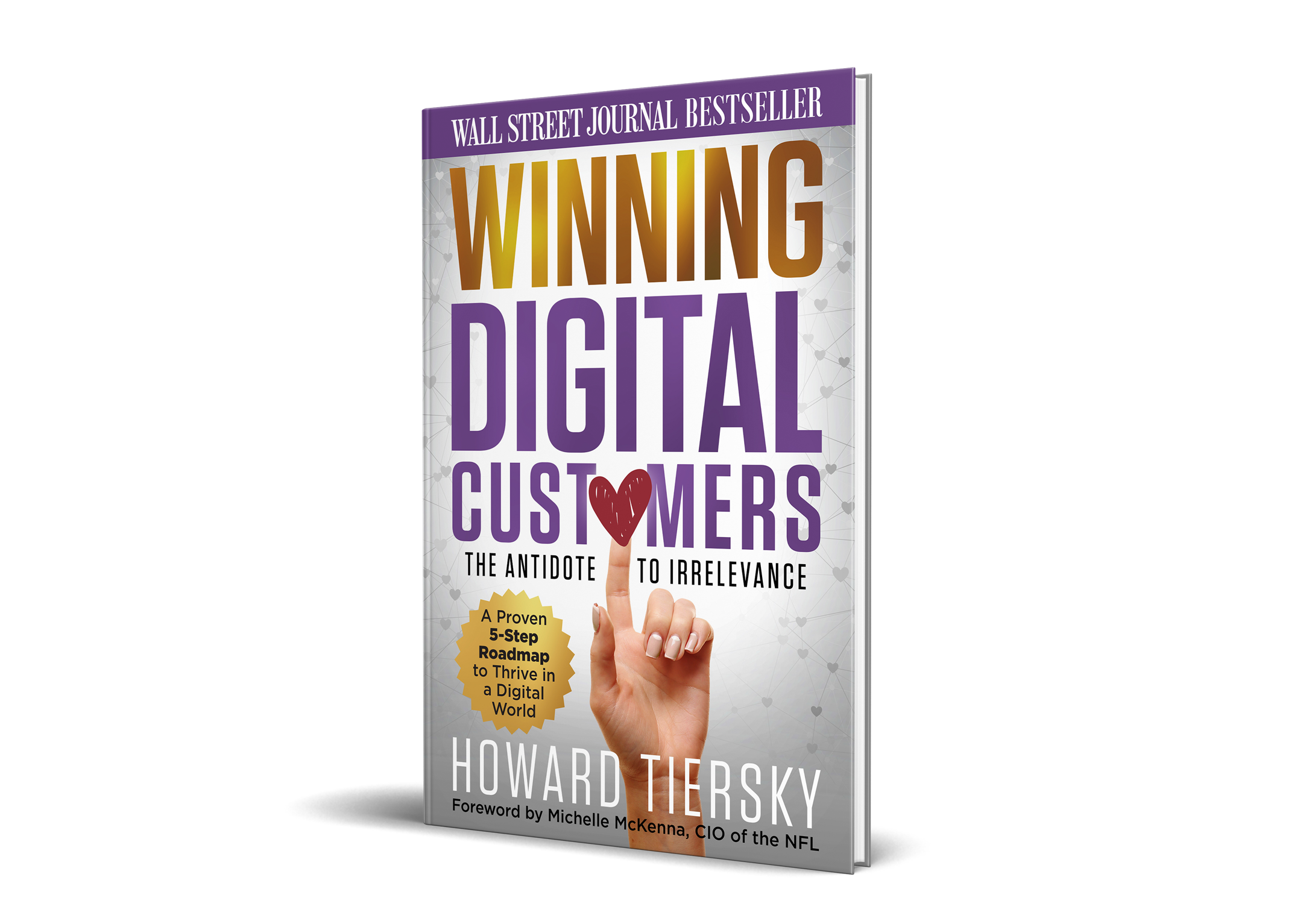Insights | By Howard Tiersky
4 Keys to Effective Teamwork
Most successful people attribute their accomplishments to effective teamwork. As the proverb says, “If you want to go fast, go alone. If you want to go far, go together.”
These four keys to effective teamwork are designed to make your workplace more productive and proficient as a unit, no matter the project.
KEY 1: GOALS

Sports teams often exhibit strong teamwork and one reason behind this is their goal is fairly simple and shared by everyone participating. While strategies differ team to team and game to game, it essentially comes down to winning by scoring more points than the other team.
Achieving desired business outcomes is more nuanced than a game of football, so shared goal clarity is all the more important. This is especially the case when there are multiple goals at play.
Some initiatives may have seemingly obvious goals like growing your business, but achieving the goal of winning new customers may come at the cost of higher profits or vice versa. Getting a team on the same page in terms of the precise goals and priorities is key to preventing conflict and working together effectively.
Team vs. Individual Goals
A team is, after all, a group of people, and each of them has their own reasons for being on the team and what they personally hope to achieve from their participation. These “personal” goals may be quite different from the team’s goals.
It is important to see this fact not as a conundrum, but an opportunity for even more effective teamwork. Where is the overlap between one person’s goal and another’s? Where is the overlap of their goals with the rest of the team and the rest of the team’s with the company’s?
When supervillains team up in a Spider-Man or Batman film, they each have their own goals for personal advancement, some of which might contradict another’s. The team-up still occurs though because they are able to recognize the overlap. Their shared goal of defeating the hero can bind several different goals under a single one that benefits everyone on the team. In some films, heroes will even team up with the villains when they share a common objective.
KEY 2: VOCABULARY

Goals and strategies are generally expressed in words. If the goal is to drive customer satisfaction, how clear is everyone on what that exactly is? It is one thing to just throw out the phrase “customer satisfaction”, it is another if everyone is thinking the same thing or not when they hear it.
Many business terms can come across as abstract. You need to find a way to make things more concrete and widely understood.
Making the abstract concrete helps us communicate. When giving directions, I could say, “Turn left at the stop sign and if you see the playground, you’ve gone too far.” You might picture the stop sign a little taller or shorter than I do. We might both have different images in our head for what’s on the playground.
But we still understand one another because nouns like stop sign and playground are concrete things we can picture and describe. A team’s “strategy” could mean anything. There is too much room for confusion.
Vocabulary is used to make sure goals are clear, as well as the methods and approaches to reaching them. If a board agrees that their company is in need of a rebrand, does that mean they need a new logo? A new name? A new tagline?
One method we use to make sure our team has the same vocabulary is to create a project brief that will clarify everything that needs to be done. This way, when we use phrases like strategy, game plan, or rebrand, we are all thinking about the same thing.
KEY 3: INFORMATION
A good principle to apply to teamwork is that, “Everyone is entitled to their own opinion, but not their own set of facts.”
Working with conflicting information makes it difficult for people to gain alignment, let alone get work done. If one team member’s weather data says a hurricane is coming while the other’s says it’s going to be a beautiful day, it’s pretty tough for the team to agree on how to respond.
The truth is that it is almost never possible to get information of 100% accuracy, but a team needs to be provided with authoritative data and methods to resolve discrepancies so that they can align on one version of the truth, enabling them to use it to make shared decisions.
Frankly, a team that picks a set of facts and works off of shared beliefs, even if some of those beliefs turn out to be mistaken in the long run, is probably going to do better than one that is constantly arguing about reality.
KEY 4: HUMANITY

People work best together when they have a real, personal relationship. As humans, we want to connect, be seen, and understood.
When someone views their teammate as nothing more than, “that guy from IT”, that person isn’t seeing their coworker as a three dimensional human being. It is easier to remain removed and uninvested in those we don’t get to know beyond their title. This is a relationship not conducive to teamwork.
Compare that with someone who knows a little more about Mike from IT. Someone who knows his interests outside work, listens to him about his kids, and may have lunch with him from time to time. This personal investment is not only going to make teamwork easier, but conflict resolution as well.
If Mike from IT presents you with a plan that is going to cost an amount of money you think is too high, knowing him better can only help you in more easily navigating this. You may be more willing to really listen to his rationale if you feel you know him as a person. And he may be more willing to consider your point of view and adjust his perspective based on your feedback if he feels respected and appreciated as a person.
Create opportunities to get to know each other and develop personal relationships with one another so as to help them better communicate and collaborate. This can be achieved through teambuilding events, icebreaker activities in meetings or even just allowing enough time for socialization before “getting down to business.”
Whenever teams experience conflicts or aren’t performing well, use these four facets to check where the problem might be: are the goals clearly defined? Does everyone share a similar vocabulary? Do they have access to authoritative information? Or do they just not know each other well enough? If you ask only these four questions you may find you can quickly diagnose the problem. Book a FREE 30-minute call with us!


My Wall Street Journal bestselling book, Winning Digital Customers: The Antidote to Irrelevance, contains a blueprint for developing a successful strategy for your company as well as practices to aid in identifying new trends and opportunities to explore. You can download the first chapter for free here or purchase the book here.





